The Royal Hospital Chelsea was founded about 300 years ago by King Charles II as a pensioners home for military veterans. It serves that same purpose today and is home to about 300 pensioners.
Our visit to the hospital was not part of my “Gibbons tour.” We went for other reasons, not expecting to find anything by Gibbons. One of our interests was the “Governor’s Parade,” which happens at 10:40 AM every Sunday morning. I asked a fellow near the entrance gate where we might find it and he said he was going that way. He took me to the “Figure Court,” an open expanse surrounded on 3 sides by buildings. In the very center of the court stood a single statue that I recognized immediately as a Gibbons sculpture.
My Gibbons interest is primarily woodcarving and I hadn’t done much research about his marble and bronze sculptures; plus we weren’t actively seeking them on this visit. This was a total and complete surprise.
The statue of King Charles II was commissioned in 1676 by Tobias Rustat, Yeoman of the Robes, as a gift to the king. I don’t know where it originally stood, but after the King James II came to power, it was moved to Royal Hospital Chelsea.
It was cast in copper alloy and was originally gilded. An undated photo in Geoffrey Beard’s book (published 1989) shows it in bronze, a finish applied in 1787. In 2002 it was re-gilded to celebrate Queen Elizabeth II’s Golden Jubilee.
It seems odd to see a British King staged as a Roman emperor. I’m guessing he never dressed this way. Maybe it was the benefactor’s idea? In the National Gallery article you can see yet another Gibbons statue of a different king, again dressed as a Roman emperor.
Attributing almost any sculptural works to Gibbons is a subject of debate for recent art historians. They mention that Arnold Quellin “worked with” Gibbons, but records are unclear whether it was a partnership or an employer/employee relationship. Equally unclear is whether Gibbons put his own name on everything that left his shop, no matter which shop member created the work. It is well-known that Gibbons employed many woodcarvers and that extensive woodcarving commissions such as St. Paul’s or Hampton Court, were the work of many hands but credited to Gibbons. Did he have the same practice for the sculptural work? No matter what historians think, the current owners are pleased to call it Gibbons’ work.
As for me, I like the sandals!
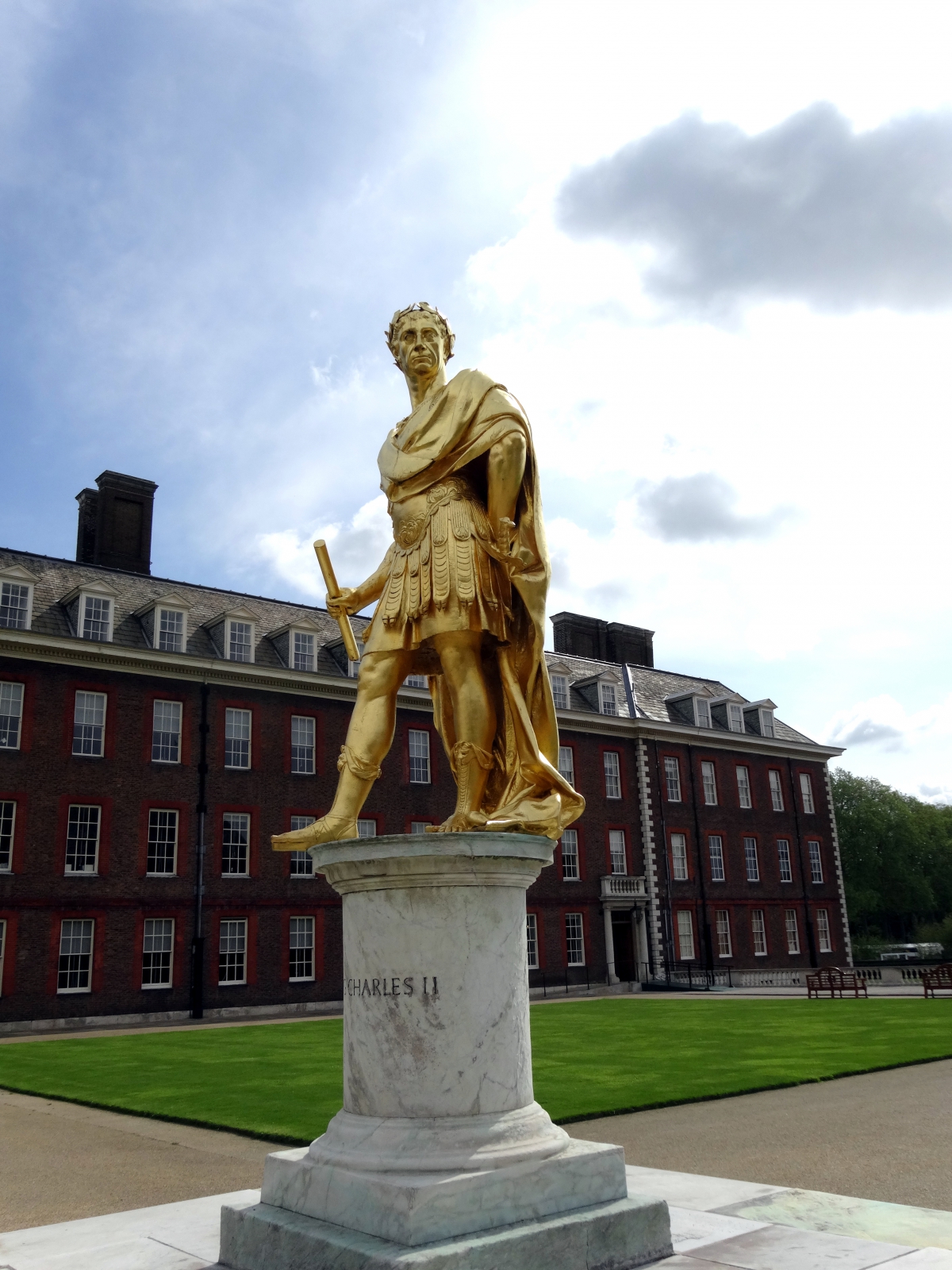
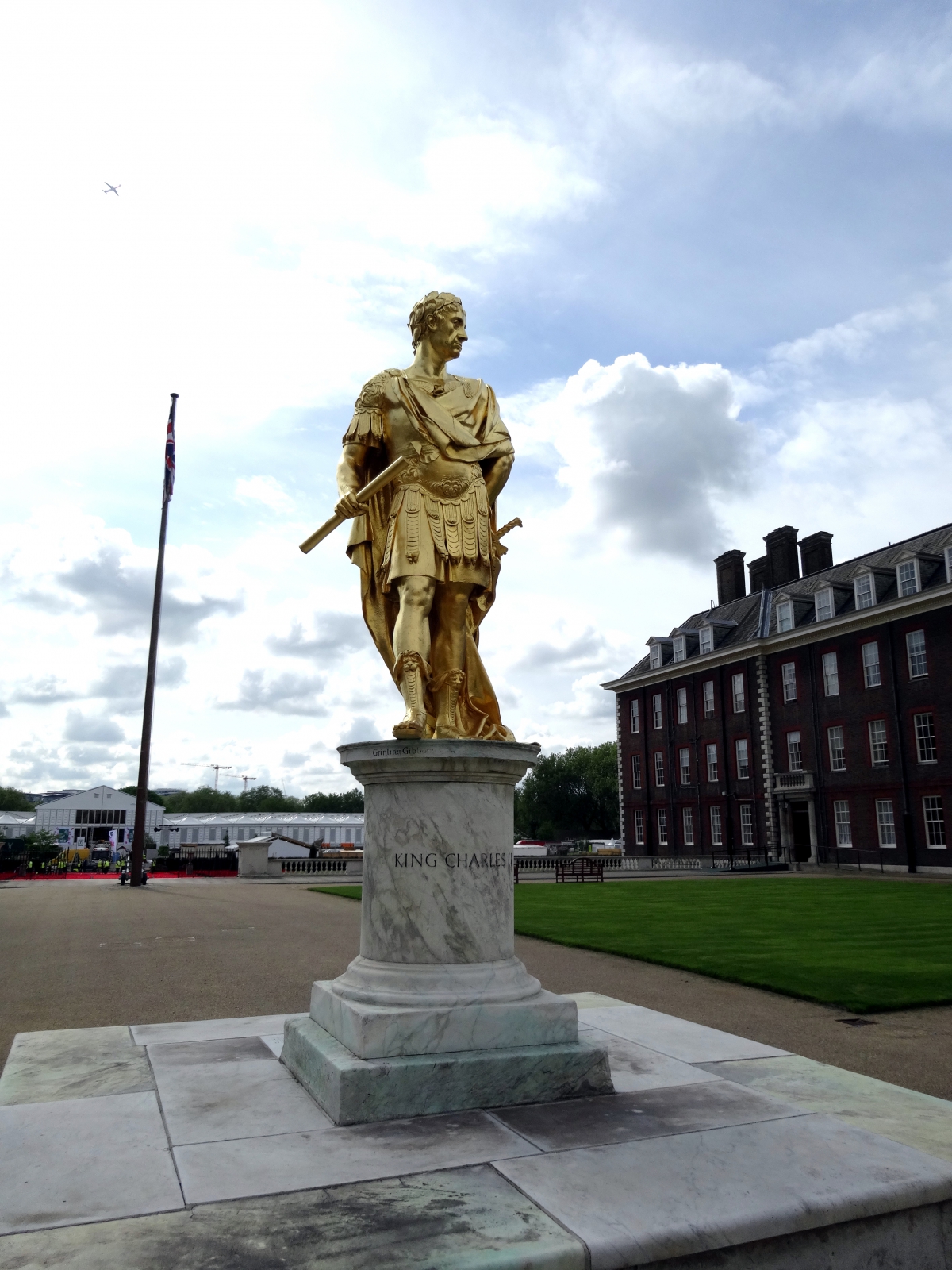
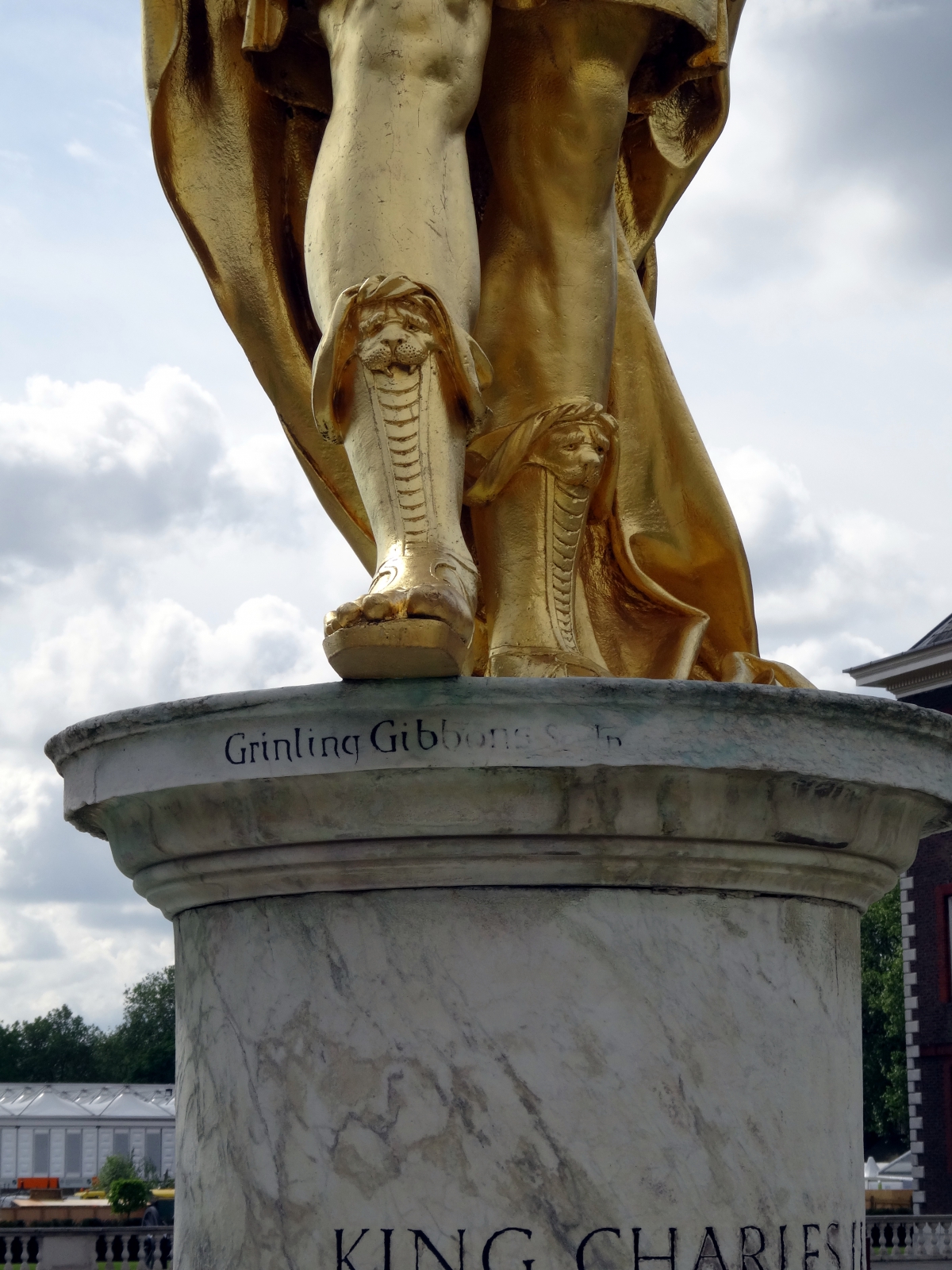
Are any of you guessing who the architect was for those buildings? Yes, Sir Christopher Wren.
The reason we visited
The real reason we visited RHC: to pay respects to Lady Thatcher. She and her husband, Denis, were laid to rest in the burial grounds there. The hospital was one of her favorite charities.
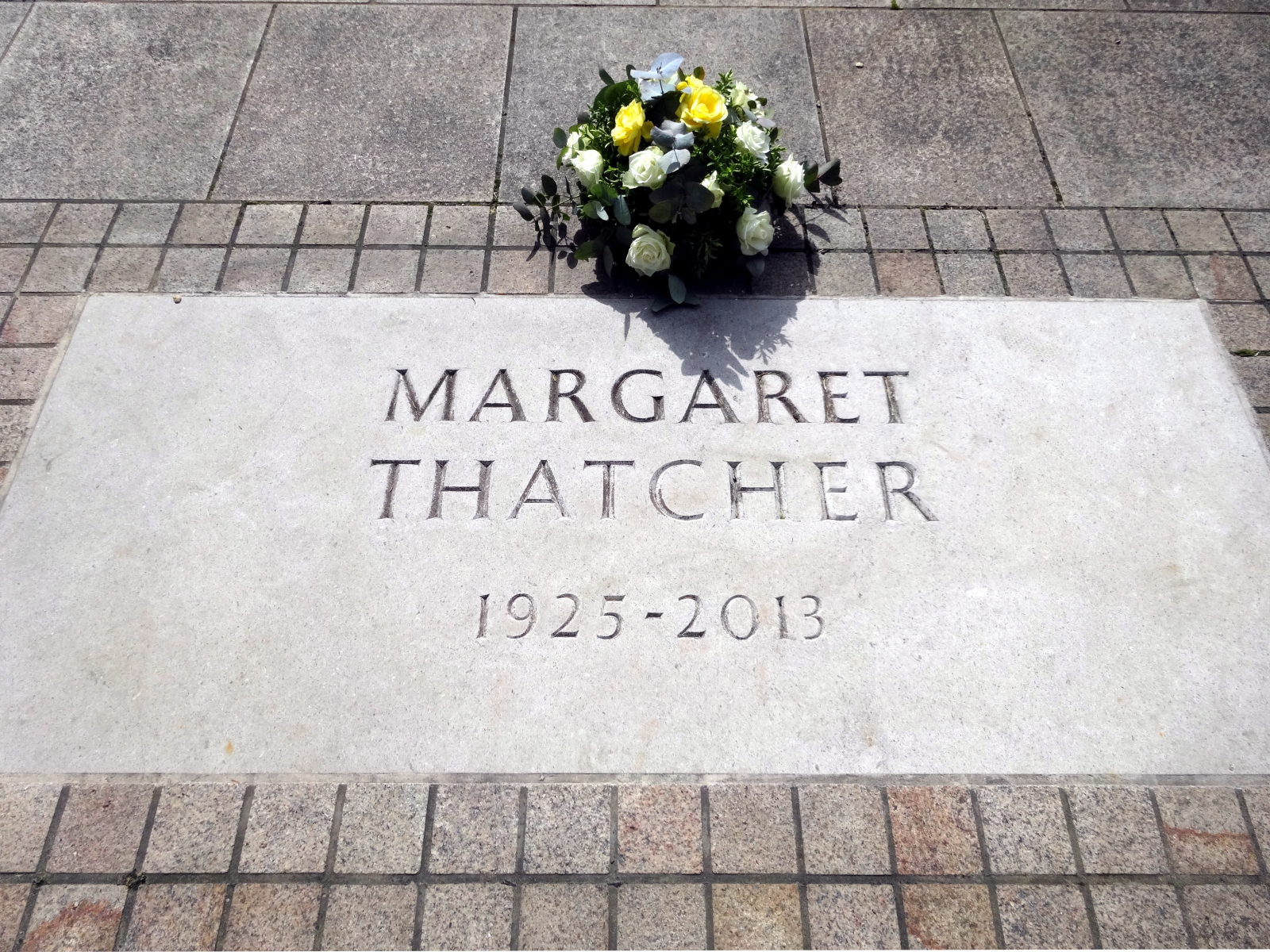
We found the two things we came for, a tribute to Lady Thatcher and the Governor’s Review. We had lunch at a charming cafe on the grounds of the RHC surrounded by beautiful flowers and, of course, had the surprise bonus of seeing a Gibbons sculpture. A most enjoyable day!
Oh, by the way…
The Governor’s Review that I mentioned at the opening of this article, is a tradition in which a dozen or so pensioners turn out in dress uniform at 10:40 AM each Sunday and are inspected by the Duty Governor. Here are the folks we saw.
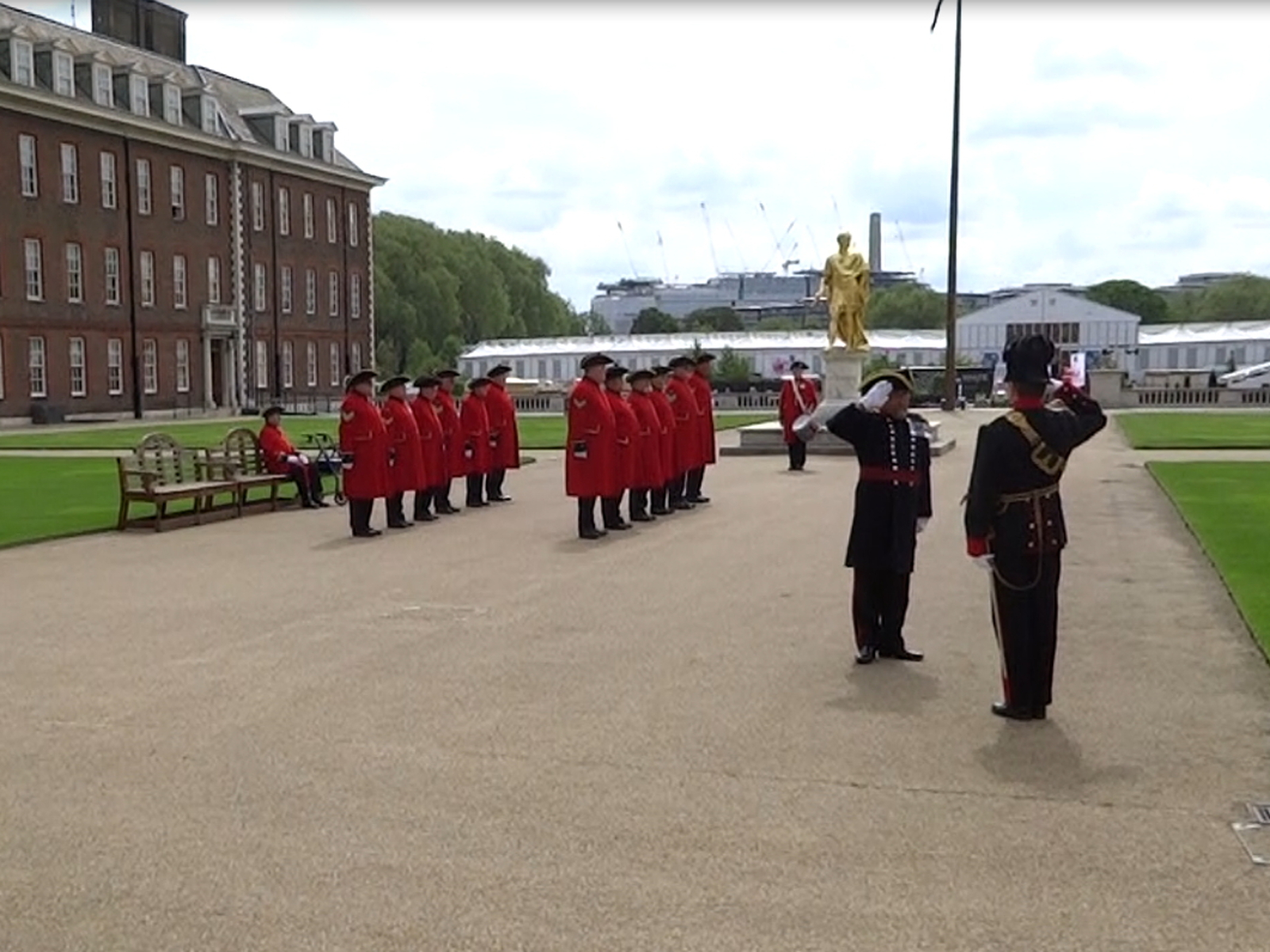
You can see a large white structure in the background of some of the pictures. That’s the exhibition hall for the Chelsea Flower Show, London’s most prestigious flower show, which has been hosted on the RHC grounds since 1913. The show was opening the day after we visited, and people were scurrying around everywhere making last minute preparations. Among those was the entry way to the show, the red carpet of poppies.
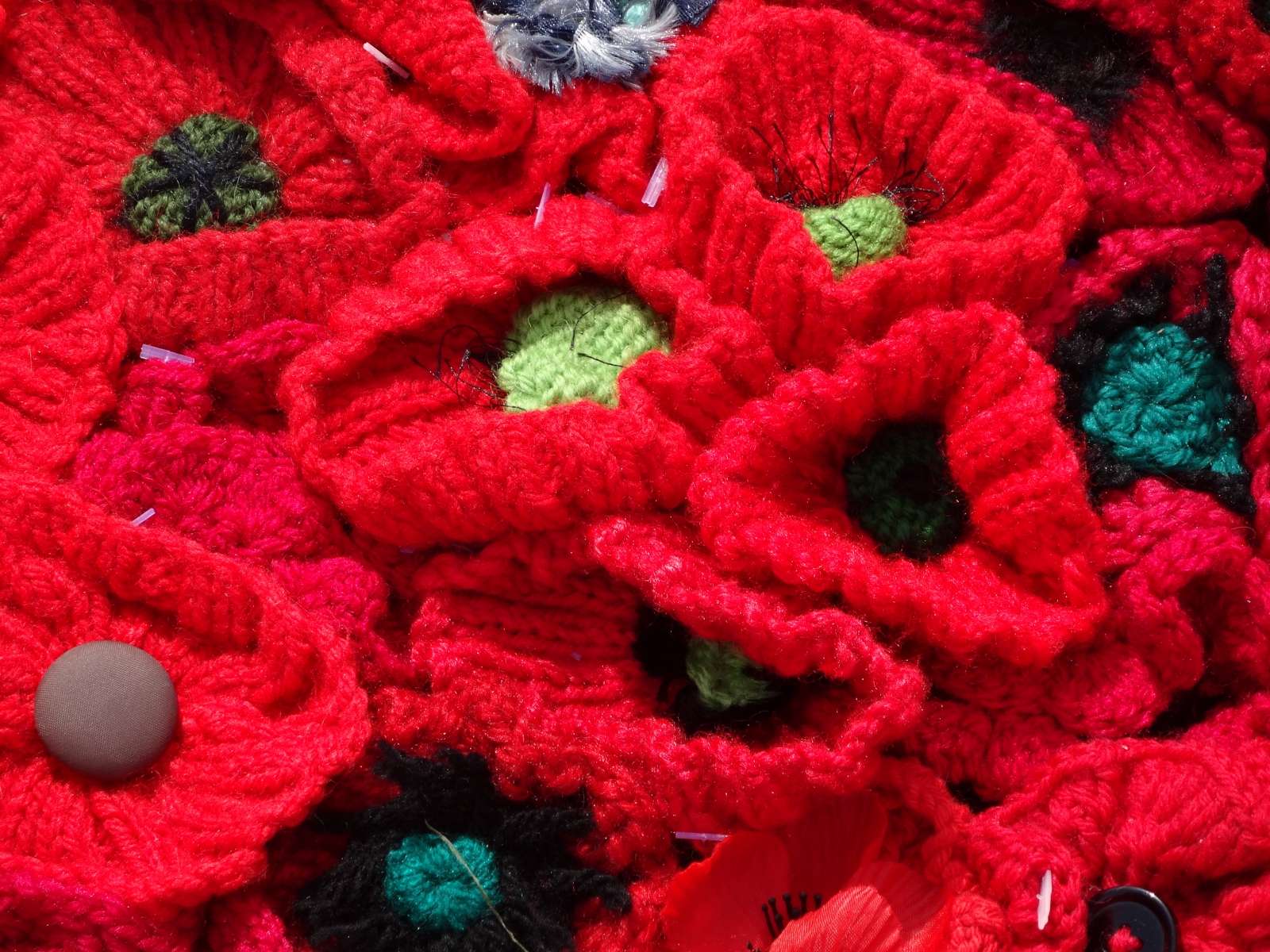
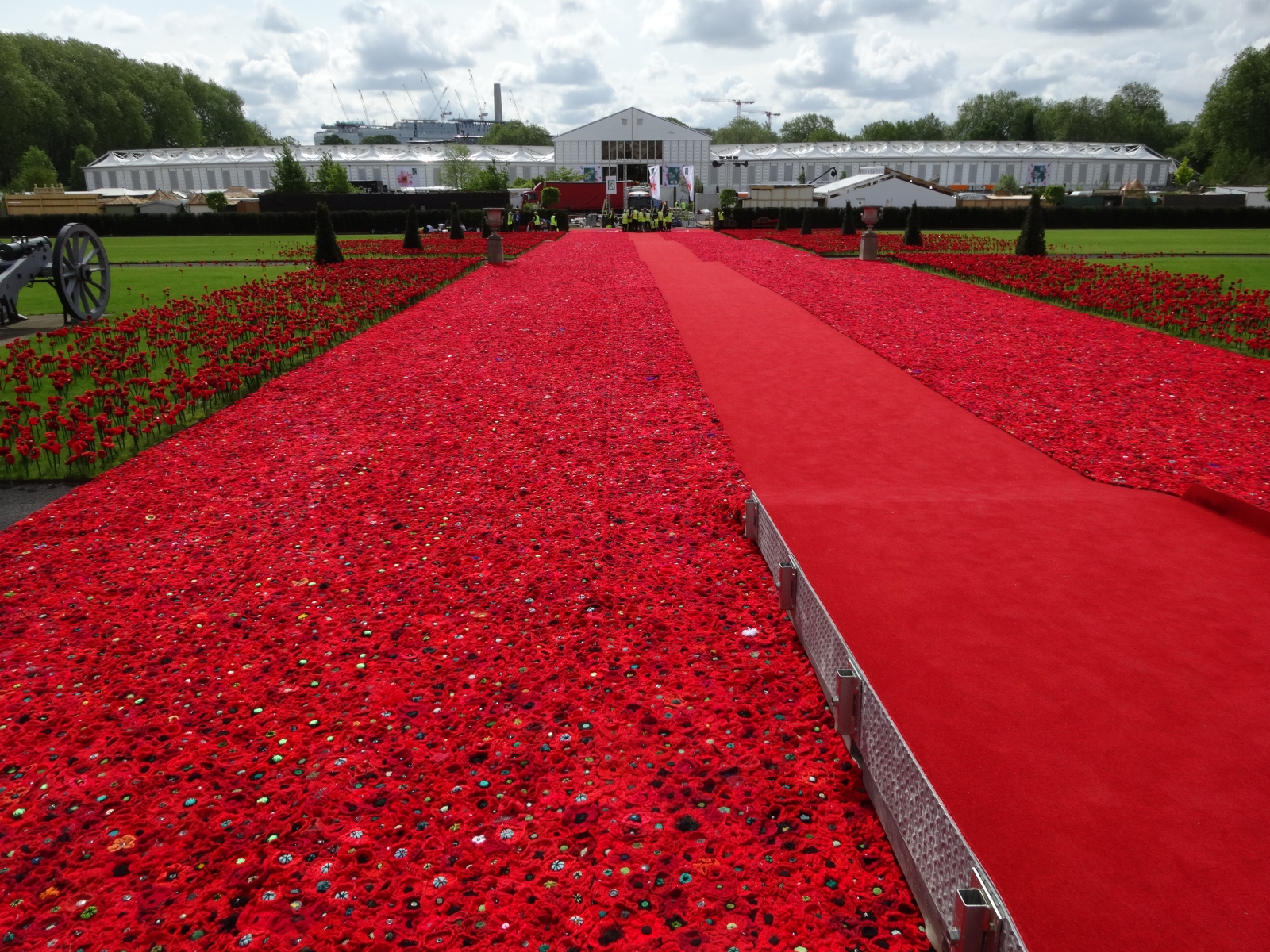
Poppies have been the symbol for fallen war veterans since the first World War. The UK has a history of using large settings of poppy displays in flower shows and other public events. For this show, hundreds of people around the world either knitted or crocheted literally thousands of poppies that were “planted” alongside the red carpet.
In Flanders Fields
In Flanders fields the poppies blow
Between the crosses, row on row,
That mark our place; and in the sky
The larks, still bravely singing, fly
Scarce heard amid the guns below.We are the Dead. Short days ago
We lived, felt dawn, saw sunset glow,
Loved and were loved, and now we lie
In Flanders fields.Take up our quarrel with the foe:
To you from failing hands we throw
The torch; be yours to hold it high.
If ye break faith with us who die
We shall not sleep, though poppies grow
In Flanders fields.— John McCrae, May 1915
Your comments are welcome: